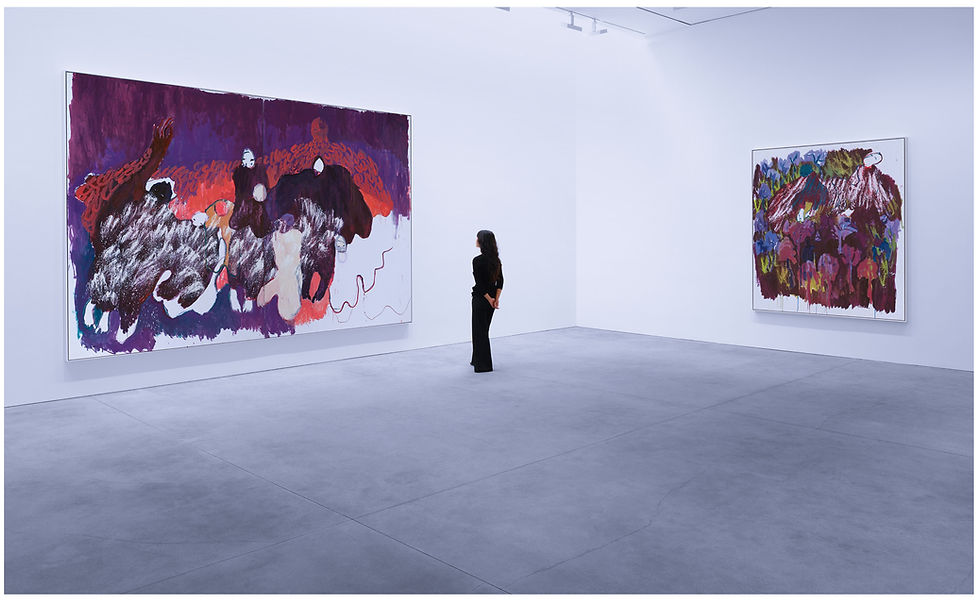Towards a Smarter Future: How South Africa Is Redefining Its Presence at the 61st Venice Biennale.
- Staff Writer
- Nov 8
- 3 min read
by artweb

As countries around the world announce their participation in the 61st edition of La Biennale di Venezia, the recent statement from South Africa’s Department of Sport, Arts and Culture (DSAC) confirming the nation’s participation in the Venice Biennale Arte 2026 marks a significant shift in how one of its most prominent cultural showcases will be governed and delivered.
Traditionally, national pavilions are organised directly through government departments or agencies. In this instance, DSAC has adopted a different model: it will continue to fulfil its role such as the rental of the official exhibition space and handling diplomatic matters, but has handed over full responsibility for fundraising, project management and production of the South African pavilion to a registered non-profit organisation, Art Periodic South Africa (A°P). In addition, a multi-sector advisory committee has been established, comprising figures from the arts, business, and civic sectors, to advise on long-term sustainability, partnerships, and selection processes. The pavilion will operate via an open call launched yesterday, 7 November 2025, inviting curatorial proposals and collaborators.
This sector-led approach carries a number of promising features that make it both practical and safe. Because the non-profit is rooted in the visual arts sector rather than a government bureaucracy, it is more likely to be attuned to current art-world trends, curatorial practices, and international market rhythms. Decisions can therefore be more responsive and relevant, rather than imposed from a detached official structure. The inclusion of an advisory committee drawn from multiple sectors fosters inclusive decision-making, ensuring that voices from business, arts practitioners, and civic society are heard. This helps guard against opaque or overly bureaucratic processes and builds accountability. The announcement also makes it clear that the focus is on creating a sustainable model for the pavilion to support the ecosystem rather than selecting a few beneficiaries. DSAC describes this as a “sector-driven collaboration and inclusivity” model, meaning the investment is being directed toward the structural capacity of the pavilion, its mechanisms of representation, collaboration, and partnership, rather than simply funding one artist, gallery, or institution.
Having an open call, an advisory committee, and a non-profit entity to manage the project helps diversify risk. It is less exposed to changes in political leadership and can build institutional memory and professional practices rather than depend on short-term appointments or programmes. The department’s statement also emphasises that this model is part of a broader commitment to strengthen the creative economy, advance cultural diplomacy, and position South African artists and institutions at the heart of global exchange. This approach ensures that the investment is not just about representation alone but about embedding South Africa within a sustainable global art ecosystem.
For artists, curators, and galleries, this represents an encouraging signal. It suggests that the pavilion’s management will be more in tune with the realities of international curatorial practice and that decisions will be guided by artistic vision, feasibility, and market awareness. The open call invites multiple voices, which is crucial in a context where representation, diversity, and access have often been constrained.
For artists, curators, and galleries, this represents an encouraging signal. It suggests that the pavilion’s management will be more in tune with the realities of international curatorial practice and that decisions will be guided by artistic vision, feasibility, and market awareness. The open call invites multiple voices, which is crucial in a context where representation, diversity, and access have often been constrained. For funders, partners, and the private sector, the model offers a clearer and more credible entry point. By emphasising partnership and co-creation rather than top-down control, it creates opportunities for meaningful corporate or philanthropic investment that aligns with cultural development, rather than being limited to token sponsorship. This marks a bold and progressive step towards a more inclusive, transparent, and globally engaged art ecosystem not only for South Africa, but many other African art economies
One cannot ignore the importance of this development, as South Africa has one of the continent’s most advanced art ecosystems and markets. For us in Zimbabwe, it is vital to look closely at this model, especially given the many synergies between our art scenes and the significant number of Zimbabwean artists who actively participate in and contribute to South Africa’s cultural sector. It offers lessons.




Comments